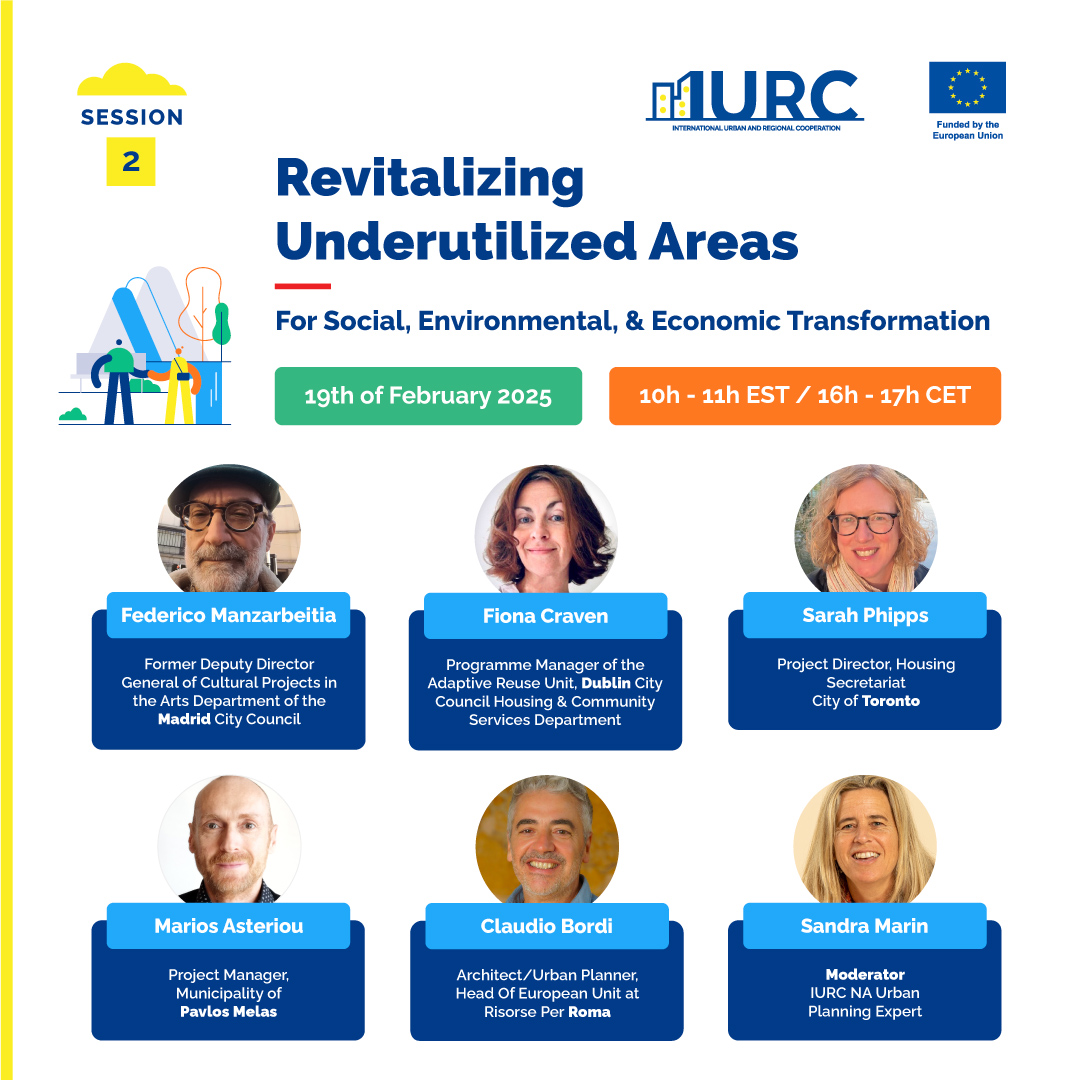February 19th, 2025
This session showcased successful revitalization projects from Madrid, Dublin, Rome, Toronto, and Pavlos Melas, where decommissioned industrial sites, abandoned military facilities, and vacant public buildings were transformed into thriving spaces.
Urban areas worldwide face the challenge of underused and abandoned spaces. Left unaddressed, these locations can contribute to inequality and urban fragmentation. However, with the right strategies, they present incredible opportunities for economic growth, sustainability, and social integration.
During our webinar, we explored how innovative collaborations between public authorities, local communities, and private stakeholders unlocked new cultural, social, and economic potential in these spaces.
Speaker Pitches
Each expert presented their insights and experiences, giving you a glimpse into their expertise and providing new perspectives:
1.Revitalizing Dublin’s Vacant Spaces.
Dublin City Council’s Adaptive Reuse Programme converts vacant commercial buildings into social housing, tackling dereliction and reducing carbon emissions.
This initiative is reshaping Dublin, blending heritage, housing, and sustainability.
2.Revitalizing Pavlos Melas: From Military Camp to Green Park.
The 33Ha former military camp of Pavlos Melas, abandoned in 2005, had become an urban gap, with deteriorating buildings and safety concerns.
A model for sustainable urban renewal through collaboration and long-term planning.
3.Reimagining the Runway: Toronto’s New Public Space
A former airport runway in Toronto is being transformed into a vibrant public space at the heart of a new 110,000-person community.
With a 30-year redevelopment timeline, interim events and activations are already bringing life to the space, shaping its future as a unique urban destination.
4.Revitalizing Rome: Community-Led Transformation of Abandoned Spaces
Rome has transformed abandoned spaces through grassroots initiatives, fostering community engagement, environmental sustainability, and social inclusion.
These projects have revitalized neglected areas, strengthened civic participation, and demonstrated that collective action can drive meaningful urban regeneration.
